Question: How do you divide 14 potatoes between 4 people?
Answer: Mash them. Hahahaha!
Most children do not enjoy solving division problems – especially problems with remainders! However, the Quotient and Remainder game found in the Math Card Games book, D7, is a game that will give your child practice on solving division problems with remainders and have fun while doing it!
To play this game, you will need the multiplication card deck and the basic card deck. Make sure they’re both shuffled well. Deal each player six basic number cards.
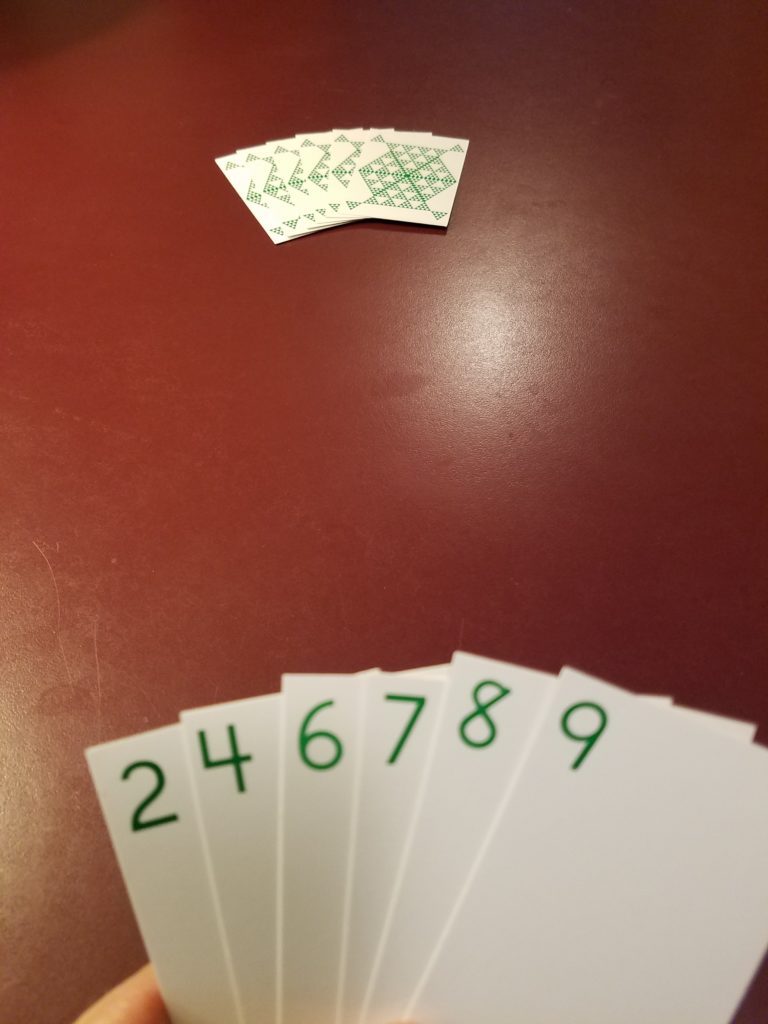
To set up the game board, create two rows of one multiplication card and one basic card (do not use the zeros) making sure that the multiplication card is larger than the basic number card.
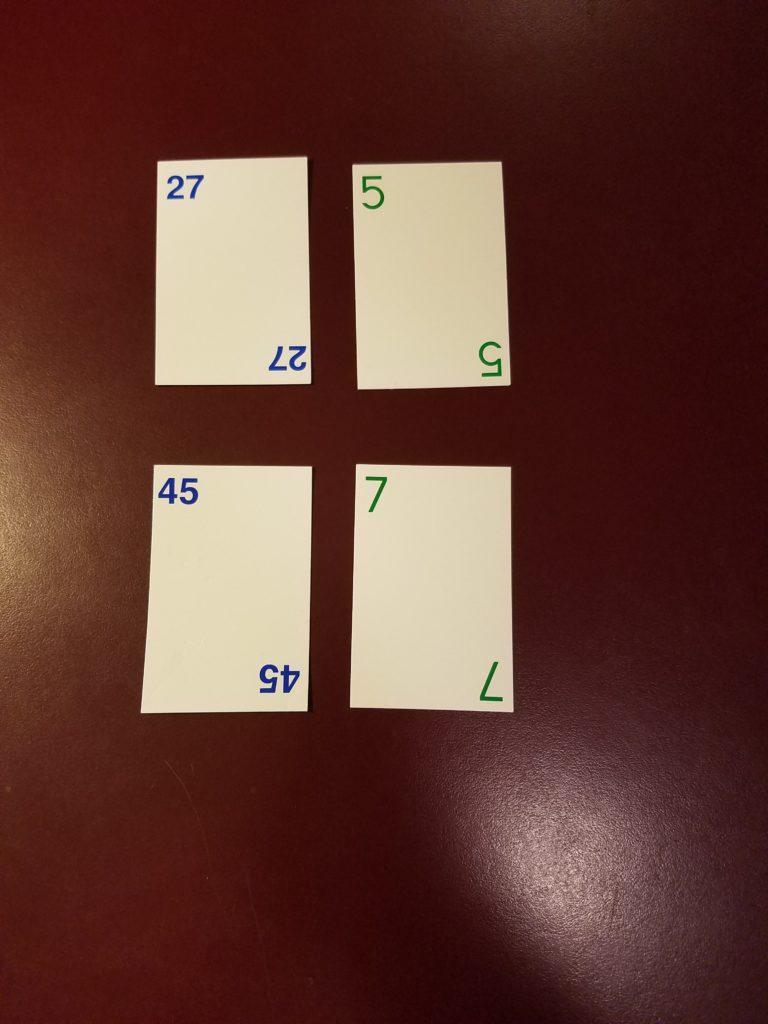
The first player looks at the cards and works through the division equation. In our example, she sees 27 divided by 5. The solution is 5 with a remainder of 2. So she will look in her hand and see if she have either a 5 or a 2 card.
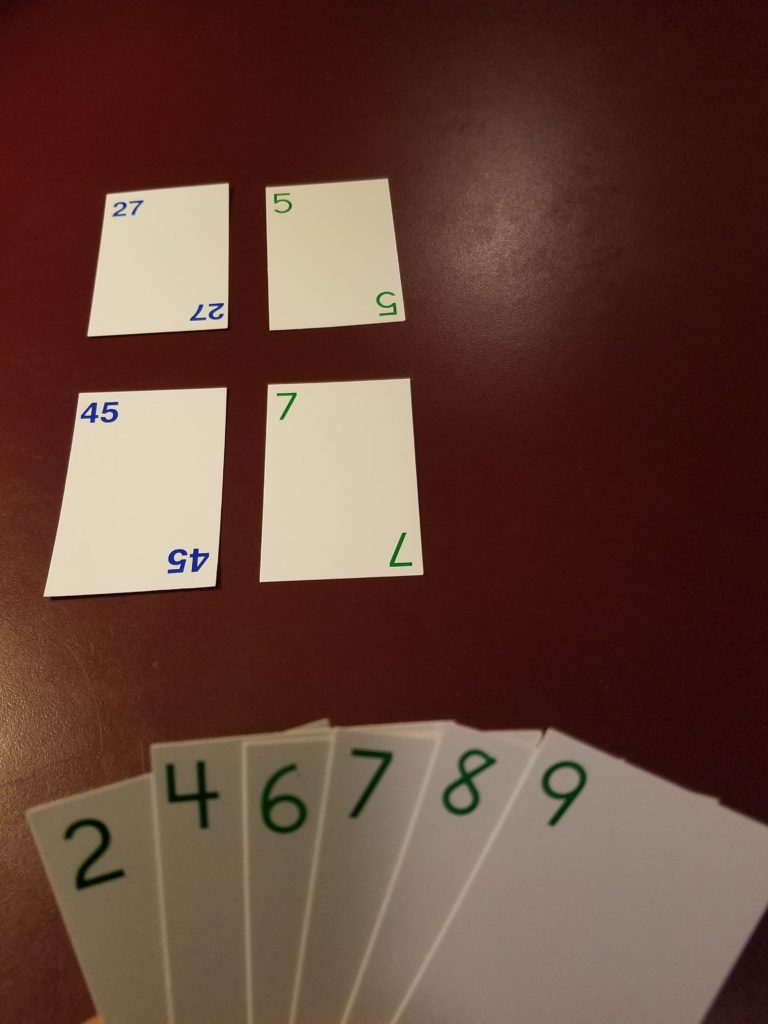
She has a 2 card in her hand so she will play her it in the same row, leaving enough space to lay the 5 card in place.
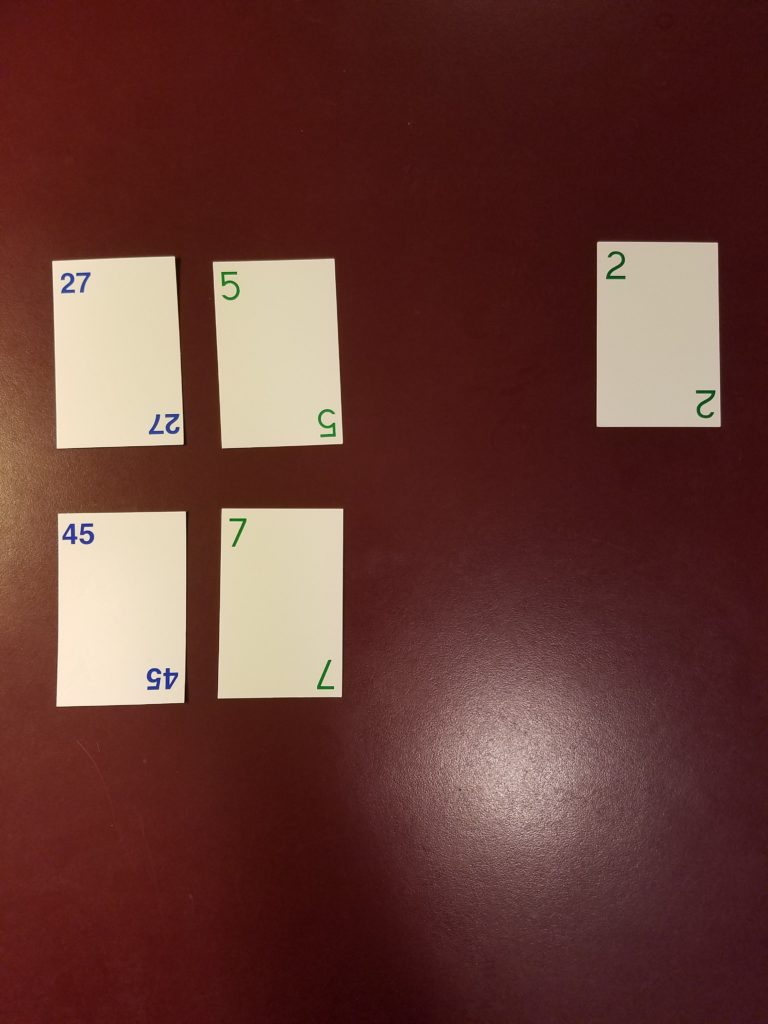
Then she looks at the second row, 45 divided by 7, and solves that problem; 6 with a remainder of 3. She again looks through her cards.
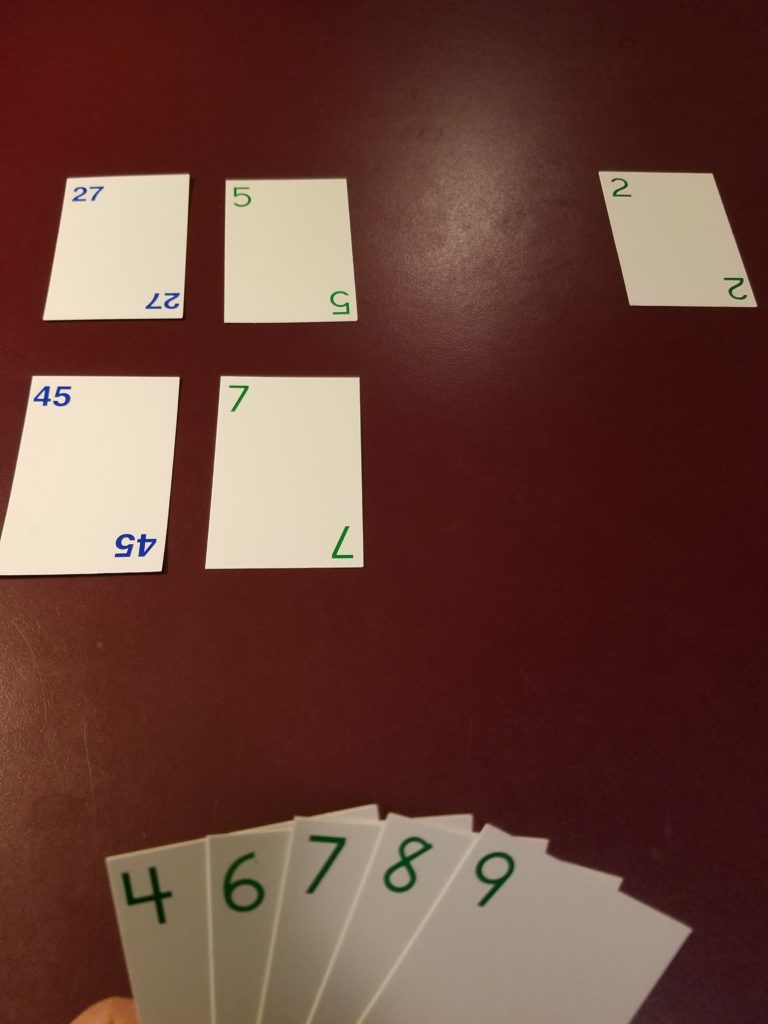
She has a 6! So she lays down the 6 card in that row.
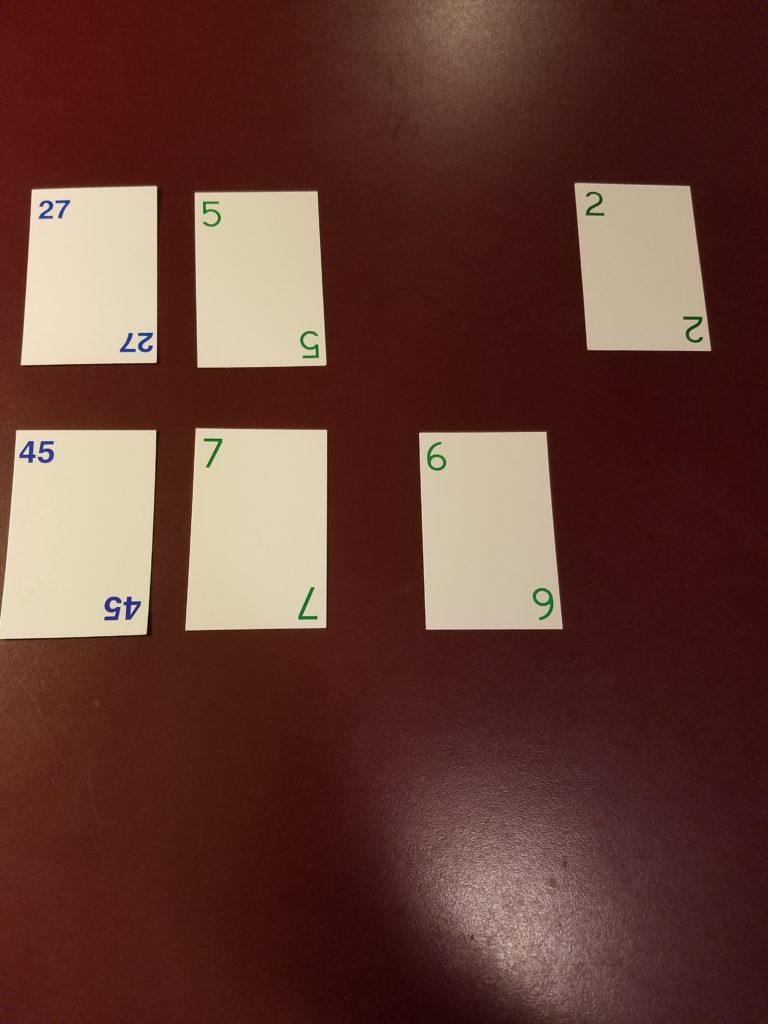
Because the first player has no more cards to play, she draws two cards to keep six cards in her hand. Her turn is over now.
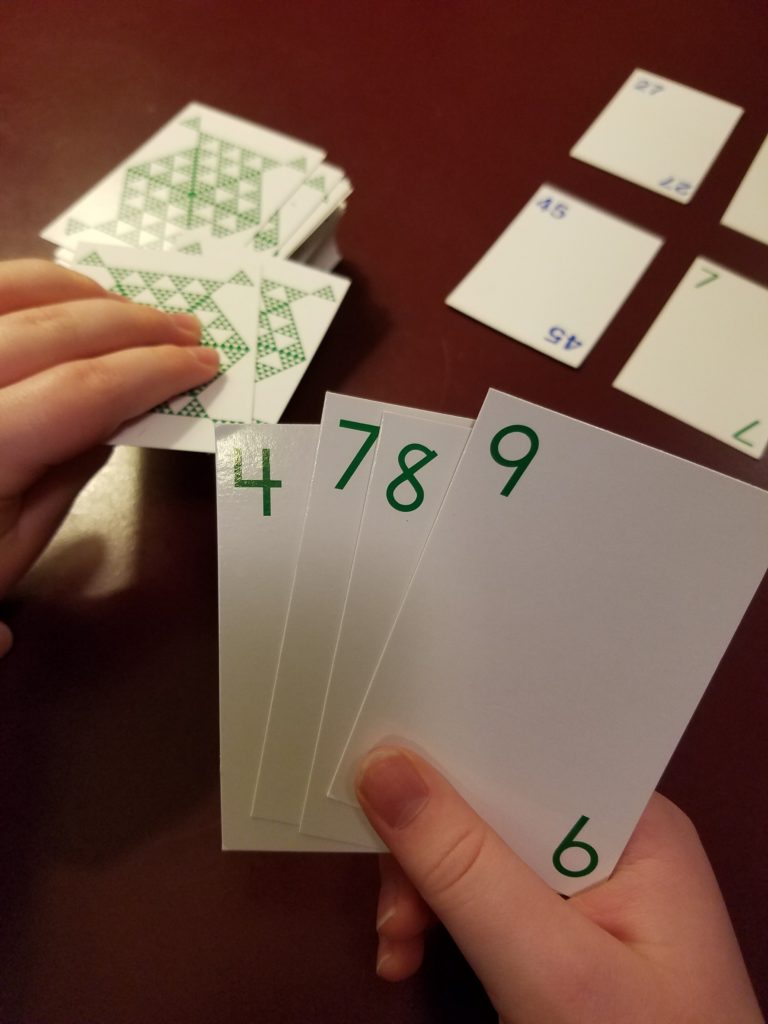
Now it is the next player’s turn. He looks through his cards and finds that he does not have any cards to complete either of the rows; a 5 or 3 card.

So, he draws a multiplication card from the stock pile and chooses a card from his hand and lays them down to start a new row.
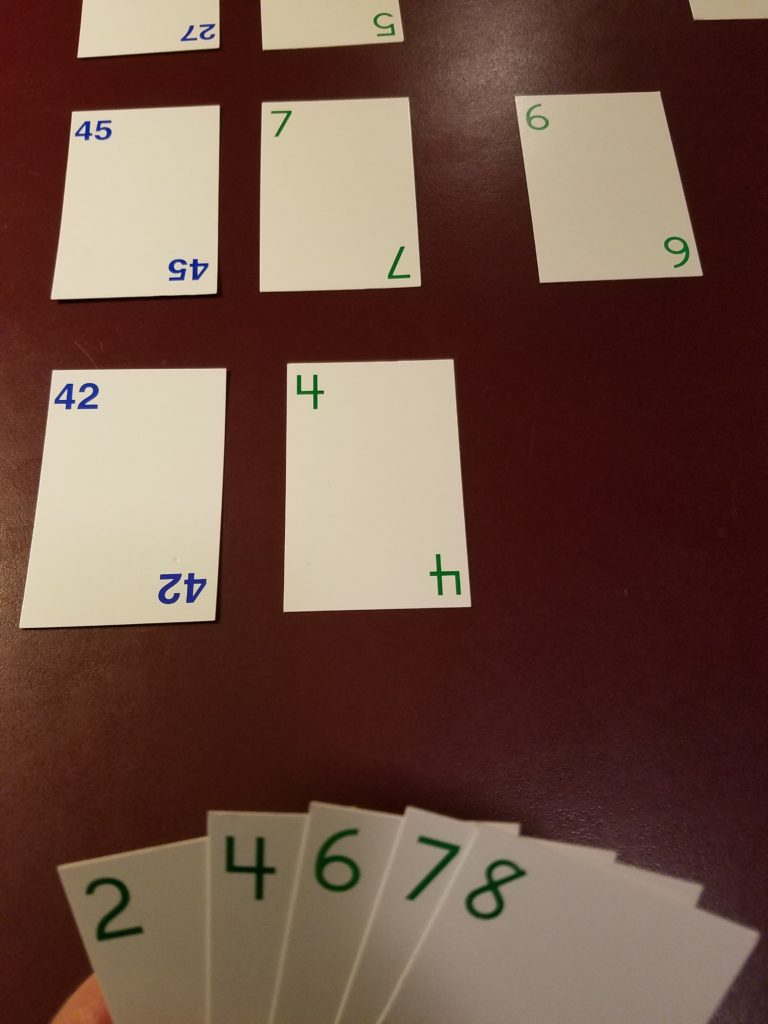
He will now draw another card, keeping six cards in his hand, and his turn is over.
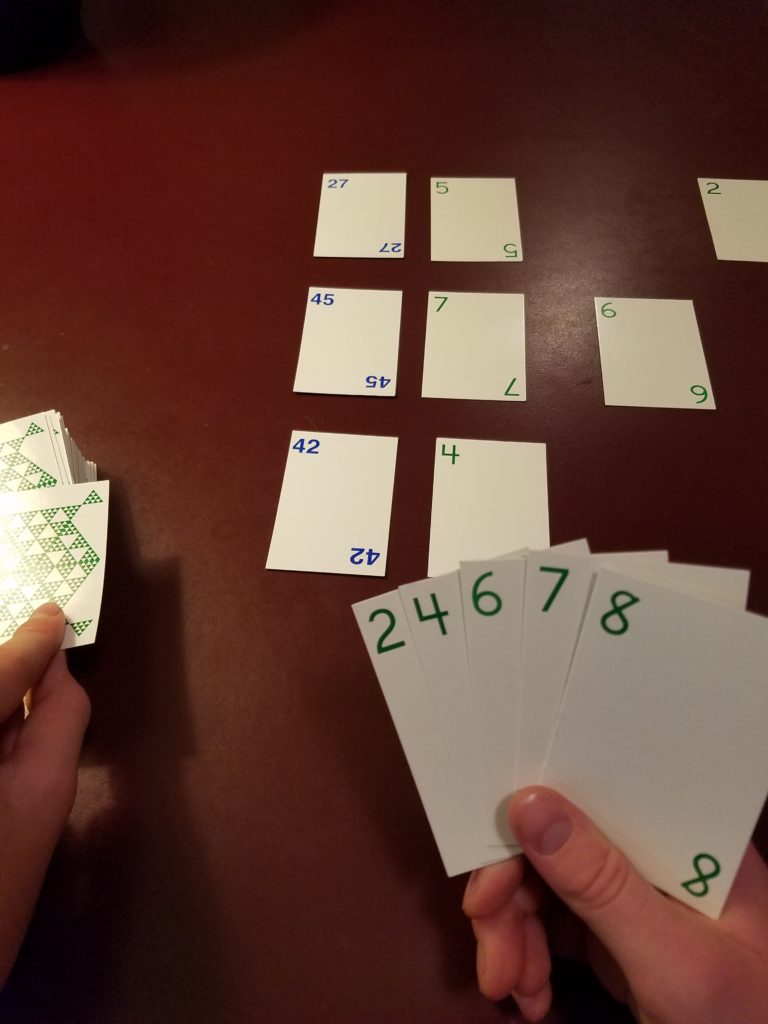
It is now the first player’s turn again.
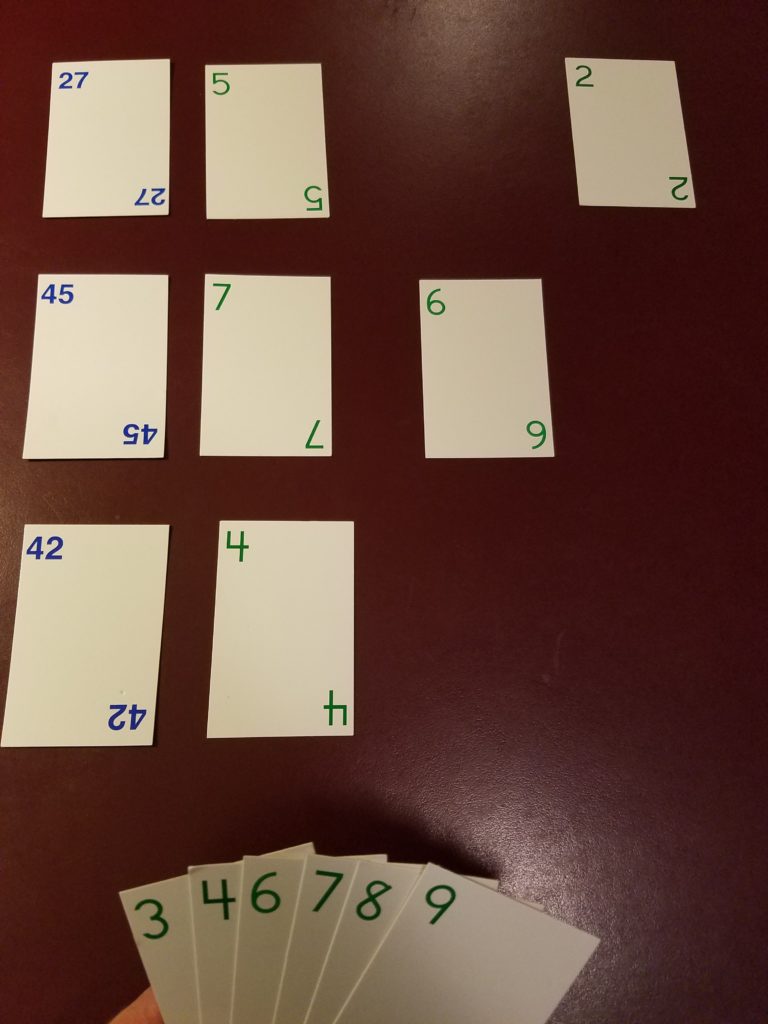
She can complete the second row!
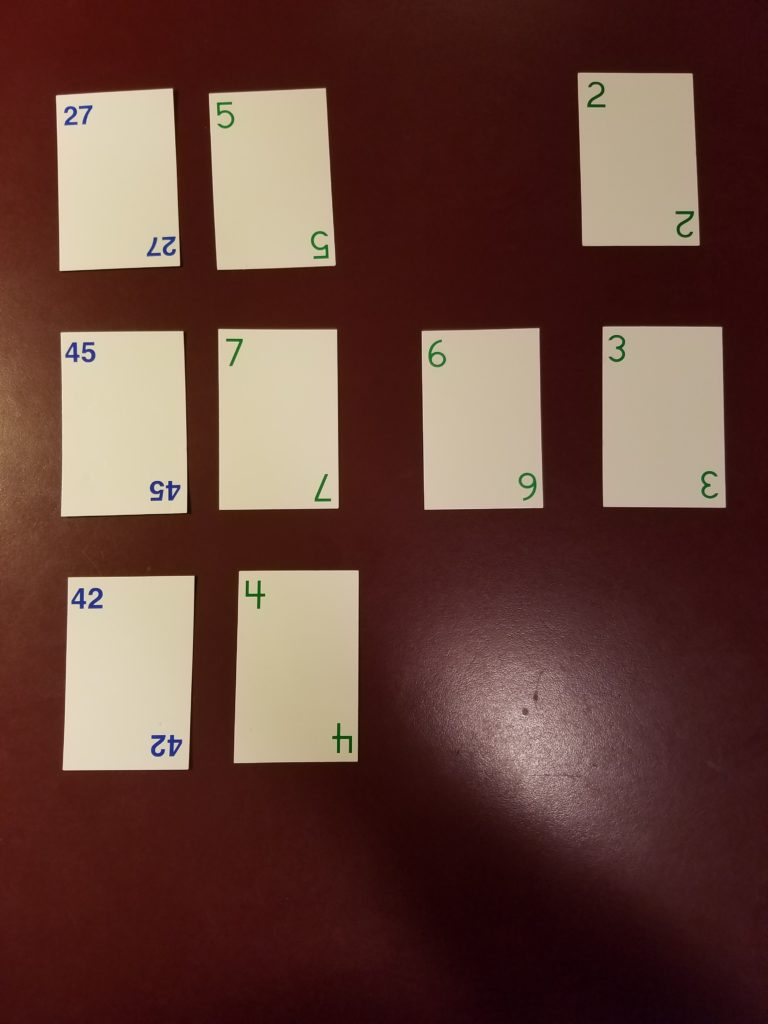
She collects the cards from the completed row.
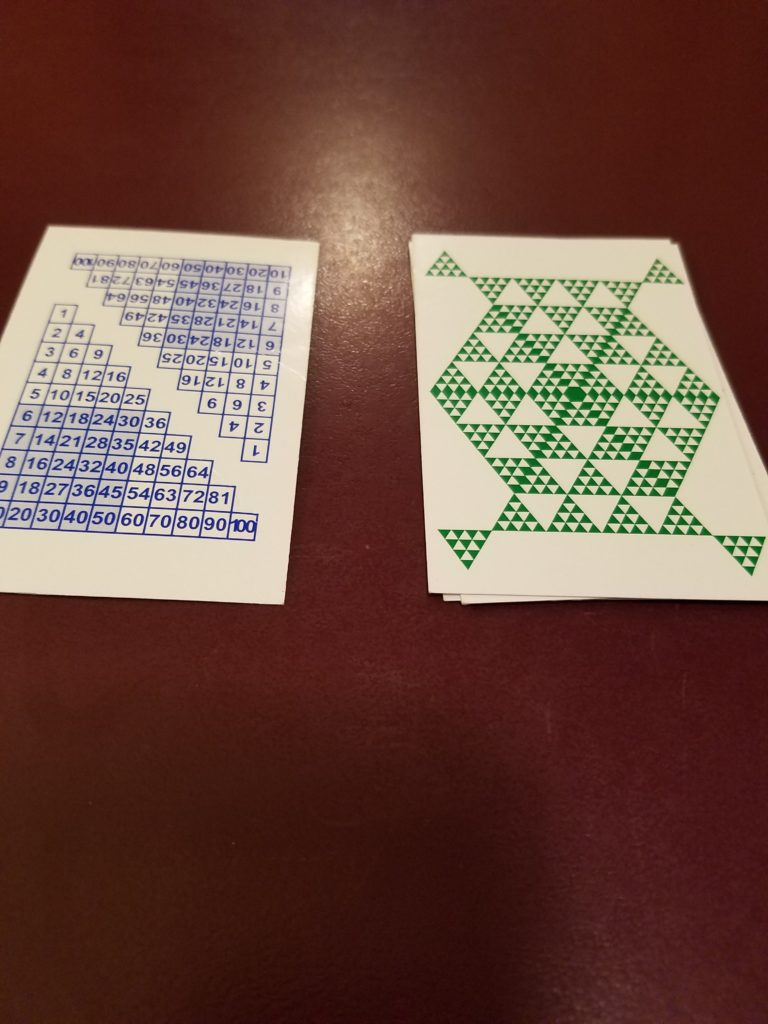
Note: By keeping the cards in separate stacks, it is easier to determine who wins. It also helps to put the cards back in the right decks at the end of the game.
Extra Game Detail:
If at the end of a player’s turn there are less than two rows, the player needs to start a new row by using one of the basic number cards from her hand and one multiplication card from the stock pile.
To determine who wins the game, the players compare their multiplication card piles. Whoever has more, wins.
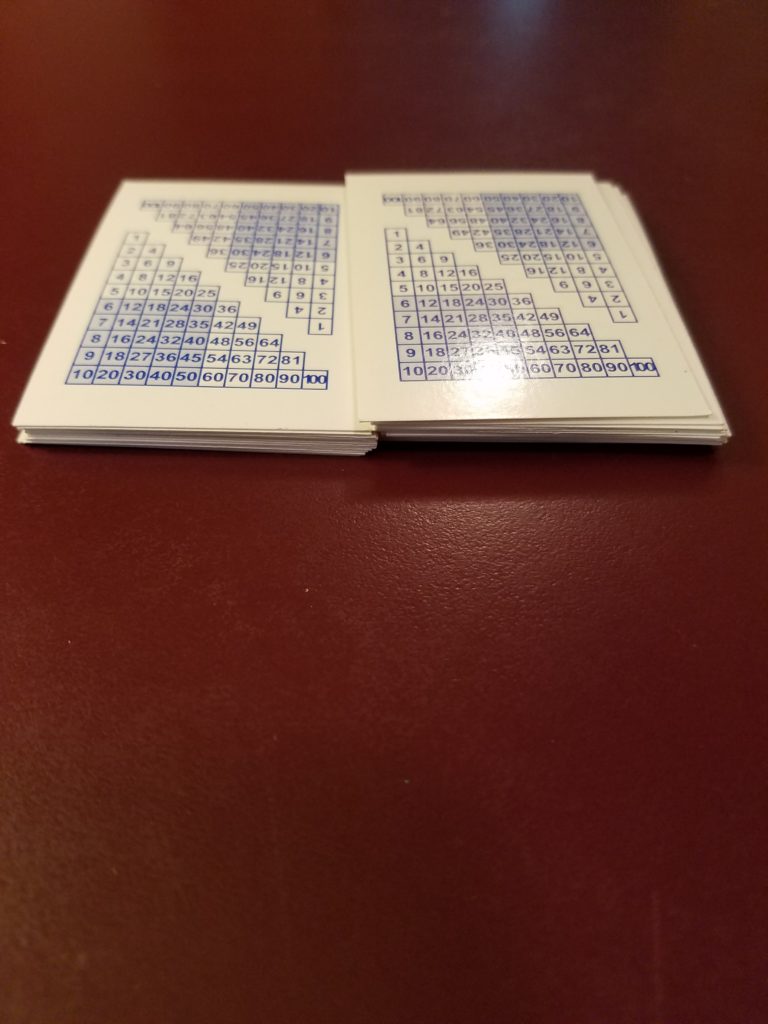
Question: Why did the girl wear glasses during math class?
Answer: Because it improves di-vison. Huh?
Division and remainders can be fun. Enjoy your summer and stay tuned next week for another fun summer game!

I love it! I’m teaching remedial math this summer at a community college and I’m using the summer games to make it fun and give them more practice. I’ve already shared with them your favorite quote “games are to math what books are to reading” keep the fun coming and the puns as well!
Dr. Nancy Hameloth
Wonderful, Nancy!!!
Hi there , while playing this game I had 80 divided by 3 as my row, the answer is 26.66667 , if we are just using basic cards how would i lay down 26 since they only go up to 10?
Hi, Katie.
Thank you for your post.
So, when the quotient is a double-digit number, we overlapped the cards. The answer would be 26 with a remainder of 2. We would then need a 2 and a 6 card. We would put the 6 card right next to the 2 card so it looks like a double-digit number. Then we would put the 2 off the to side as normal.
Let me know if that doesn’t make sense and I can email a picture of what that might look like. 😉
Have a great day playing games!
Rachel
Thank you for these emails. It has us playing math games this summer.